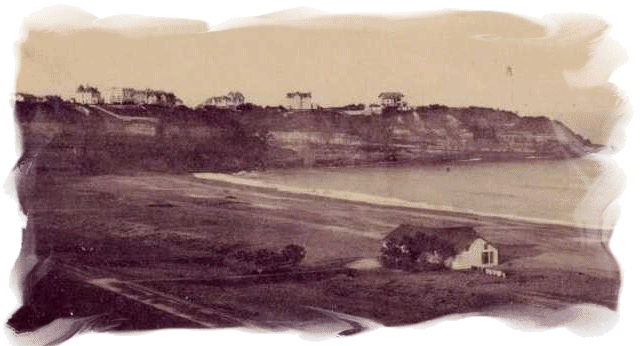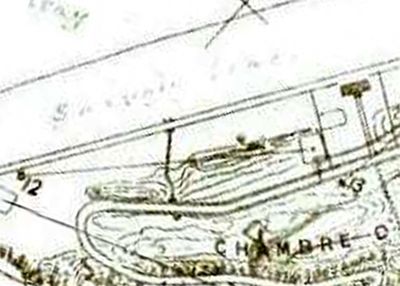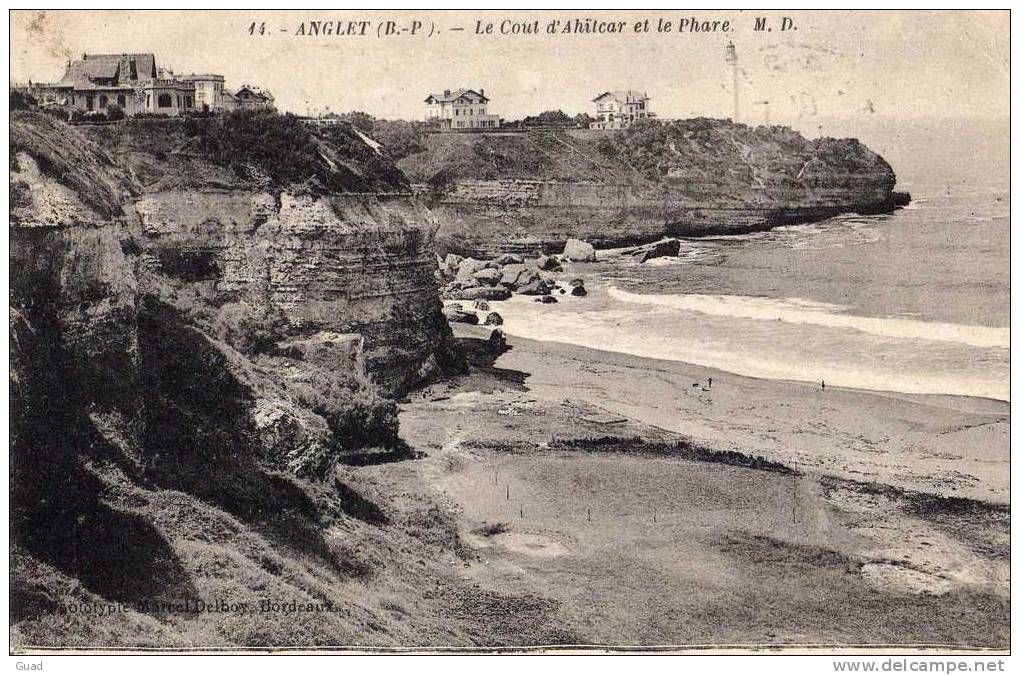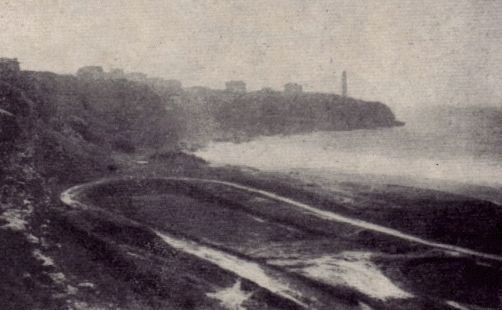Excellent work, Bryan and David. Many thanks.
IMO you have proved that the theory that CBM/Whigham's "Biarritz" was modeled on the "Chasm" hole is false. I am not yet sure, however, that you have identfied the actual "culprit." To me, the various diagrams and google earth dowloads point more to what was the 11th at Biarritz, rather than the 12th. On Bryan's post #45 you can see the old 11th green, which is now obviously part of the beach or even the sea. From the contemporary reports on this thread, this green was reached after a downhill tee shot from the Chambre d'Amour, which was significantly elelvated (see the topo marks on the contemporary sketch). The old 12th then climbed the escarpment back up onto the C d'A, then the 13th went down to the beach and then #14 ("La Montee de las Falaise") back up to the cliiff on which most of the course resides. I can see that green (of which we only have a few of the long side) being fronted by a hogsback, but I can't see the 12th, with its blind tee shot, up the cliff benefitting from what we know toeday as a "Biarritz" green.
I'm not sure I understand your description. Using the numbers on the old map (circa 1893, I think) I agree the 11th played steeply down into the Chambre, but I don't know what you mean when you say "The old 12th then climbed the escarpment back up onto the C d'A." My understanding is that the 12th played along the beach, almost at sea level, toward the building near the beach in the chambre. Here is a photo showing the land 12th played over, with the hole starting in the left hand side of the photo. One can see a "hogback" or a roll in the land along the lines the hole played. (This postcard is undated, and I am not sure if there was any course there at his point, but one can make out people near where the location of the 12th green must have been.)

As for my theory, I am not sure I've identified the actual culprit either, or that proper identification is even possible at this point. It is just my best guess based mostly on two factors:
1. CBM identified the hole as the 12th, so this seems a likely place to start.
2. The layout map (which I believe is circa 1893) has contour lines on the "new" parts of the course, and the 12th hole looks like it has a hogback running up the center of the hole and ending about 30 yards short of the green, thus matching CBM's description. And the photos I have seen of the Chambre seem to indicate the same hogback (see photo above and map excerpt below.)

Here are a few potential problems with my theory:
1. From early on, they kept adding and adding and subtracting holes from the Chambre, so it is difficult to say for certain that this was No. 12 in early 1906 when CBM first saw the hole. To make a short story long . . . originally there were four holes down there (including the 11th which played into the Chambre and the 14th ("Cliff") which played out) but at different times there seems to have been up to six holes down there, so the 9th played into the chambre and the 14th played out. So I don't have total confidence that the 12th that CBM saw was the same as the 12th on the circa 1893 diagram. That said, I think it was, based on a 1906 article which indicates that the hole right after the "Cliff" hole was the 15th. Working backwards (with what I can make of the routing from photos) that would put the 12th in the same spot as on the map. Essentially I think they added two holes in the middle of the four original Chambre holes, on playing up and and one back, right after the hole that played down into the Chambre.
2. The 12th hole on the map was closer to 300 yards than 200 in the mid 1890's, and I don't know how long it was when CBM saw it. This doesn't bother me too much because CBM was clear he was only taking an idea from the hole, and was not copying the entire hole, which he thought was pretty poor. Also, when the holes were added, this hole may have been shortened. Whatever the length, he could have borrowed the concept.
3. I've never found a good photo of the green surrounds for this hole, and the ones I do have are inconclusive.
As for your theory that it was actually the 11th hole, I considered that as well, but that theory has some problems, too.
1. I am pretty sure based on various articles and photos that in 1906 (when CBM was there) the hole you have identified was the 9th hole, not the 12th hole.
2. I've seen a number of photos of that green and while it changed a lot, it is a stretch to find the features described by CBM in any of the photos. Here are a few:



Nothing looks much like what I'd expect to see on the model for the Biarritz green concept.
So while it still remains a mystery to me, I am sticking with the 12th (on the map) for the time being.